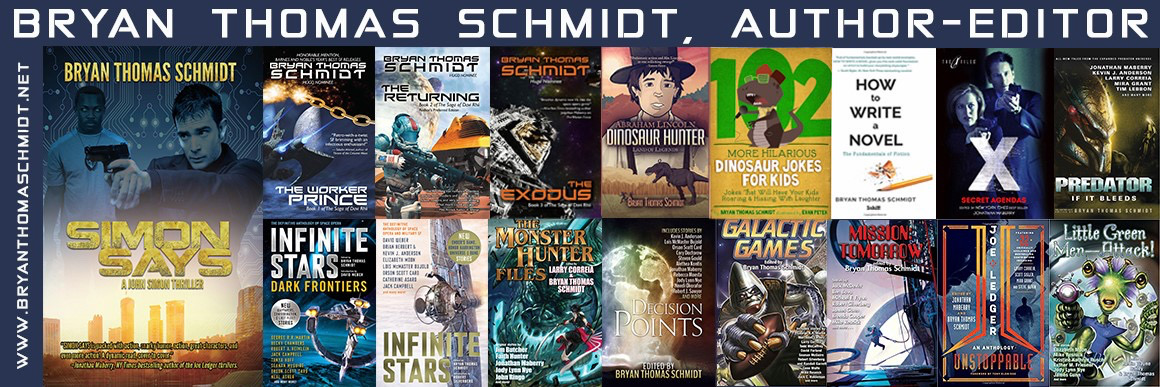 Humor can be an important part of both character development and reader engagement. When used well, it can endear both writer and characters to readers. When used poorly, it can ruin an otherwise successful tale. Here’s some tips for how to use humor effectively in your stories and novels.
Humor can be an important part of both character development and reader engagement. When used well, it can endear both writer and characters to readers. When used poorly, it can ruin an otherwise successful tale. Here’s some tips for how to use humor effectively in your stories and novels.
1 ) The Running Gag– This tool is one of the stand-by tropes of good comedy. Typically employed following the rule of threes, the running gag will repeat three times, with each one increasing in absurdity and corresponding laughter inspired. The first two act as set-ups for the big pay off of the third. Study any sitcom or romantic comedy and you can always find running gags used to great effect. For example, a character slips on a banana peel on the sidewalk in front of his paramour’s door, embarrassing himself. The next time he goes there, he looks around carefully to avoid something similar but this time, something falls from above, knocking him down. The third time, perhaps during the finale of the story, he winds up ignoring the fear and facing running after her behind a banana truck whose cargo is falling out scatters across his path, leading to all kinds of slippery footwork. This is a basic slapstick example. Most running gags or more complicated. But I think it gives you the idea.
2 ) The Love-Hate Relationship– Nothing brings out humor better than two characters thrown together who are constantly at each other’s throats–not in the “I want to choke you to death” sense, but rather in the “hurling biting insults and cutting down” sense. Watching them each attempt to outdo the other can be mined for great humor and, at the same time, used to build character. One of the best ways is for them to exploit each other’s flaws for their comments.
3 ) The Flawed Character– No one’s perfect. We all know this about ourselves. Your characters become more real when you also show this about your character. And the worst part of flaws? The way they embarrass us or put us in difficult situations where we look bad in front of those we want to impress. Exploit these situations, and you’ll find all kinds of humor in them. Another advantage is that readers are drawn to characters who are flawed in relatable ways. “Oh man, I know just how he feels!” That response endears your character to your reader and draws them into your story. It’s just part of using your character’s humanity to build empathy and sympathy and connect him or her with your readers, which, in turn, keeps them more involved and interested in your story.
4 ) The Subverted/Misunderstood Context– While creating empathy is helpful, at the same time, your character needs distance from readers for them to see the humor. If they identify too much, they won’t laugh at the humorous situation in which the character finds him or herself. It helps to have the character see the humor in the situation, nor matter how painful it may be, but again, make sure it is not too painful or offensive or the readers will be turned off. Key to this is subverting or applying misunderstood context. People interact daily with different worldviews and understandings of the context in which that interaction occurs. Mining that for misunderstandings and humor or allowing circumstances to subvert one character’s correct understanding of the context can be used to mine humor in the situation for readers.
5 ) The Fish Out Of Water– There’s always humor to be found in situations where a character is put in situations or places with which he or she might be unfamiliar or even made uncomfortable–a priest visiting a crack house, for example, or a Sunday School mom in an NFL locker room. The interactions with other characters who are comfortable in that world and even the character’s reactions can be used for great humorous effect.
6 ) Exaggeration– Exploiting a character’s perspective through exaggeration is a great tool to create humor. Pushing the character to the edge of their limits can result in funny reactions, dialogue and situations for readers and interesting ways of building or wrapping up a scene. It makes everything a bit more outrageous, but to use it effectively, everything the character does needs to have elements of exaggeration throughout. It starts small and builds to be most effective, until they are pushed to a point where they explode (figuratively, of course, in most cases).
7 ) Surprise– Another great tool is the element of surprise. If a character walks into their apartment to find all their furniture turned upside down or a totally unexpected situation, or if events unfold in ways that catch both characters and readers by surprise, humor can result. The surprise can be either physical or emotional, but as mentioned above, it can’t be too painful or offensive that it would alienate the reader. The character’s discomfort is fine and can be used for humor, but the reader’s own discomfort has more limits and must be carefully considered when using any of these tools. Be sure to arrange the elements of the scene to maximize tension and release. This will make the effect of the humor more powerful.
8 ) Satire/Parody– South Park, The Simpsons, and many other popular TV Shows employ satire and parody to mock socially relevant attitudes or even current events and point out flaws or ironies in these situations and you can too through your characters and plots. These two can be tricky to pull off well. Avoiding preachiness, for example, can be hard when it’s a subject on which you feel passionate. Take great care never to push the humor too far. Most especially, allow readers to draw their own conclusions. A few prompting remarks can be carefully exploited through dialogue but don’t overdo it. Especially if you yourself have spoken out publicly about such issues, readers will tend to see right through it and the moment may be destroyed. Still, satire and parody are classic humor tropes which should always be a part of your toolbox when writing humor.
So there they are: 8 Tools to be employed in adding humor to your fiction prose. Like any tools, using them takes practice and development of skills. Some do tend to have more natural instincts than others, but like most tools, these can be learned and incorporated instinctually into your writing arsenal. Despite being age old methods, they remain popular because they consistently work. If they work for other writers, you can be sure that, when done well, they’ll work for you.
For what it’s worth…
Bryan Thomas Schmidt is the author of the space opera novel The Worker Prince, the collection The North Star Serial, and has several short stories forthcoming in anthologies and magazines. He’s also the host ofScience Fiction and Fantasy Writer’s Chat every Wednesday at 9 pm EST on Twitter, where he interviews people like Mike Resnick, AC Crispin, Kevin J. Anderson and Kristine Kathryn Rusch. He can be found online as @BryanThomasS on Twitter or via his website. Excerpts from The Worker Prince can be found on his blog.

